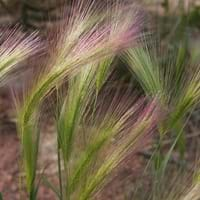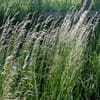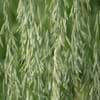Life Span
Perennial
Perennial
Origin
Europe, Asia
Australia
Types
not available
Cyathea cooperi, Dicksonia antarctica
Habitat
Grassland
Shady Edge, Woodland Garden Dappled Shade
USDA Hardiness Zone
4-8
10-11
AHS Heat Zone
Not Available
12-7
Sunset Zone
2a, 2b, 3a, 3b, 4, 5, 6, 7, 8, 9, 10, 14, 15, 16, 17, 21, 22, 23, 24
H1, H2, 15, 16, 17, 18, 19, 20, 21, 22, 23, 24
Habit
Clump-Forming
Upright/Erect
Flower Color
White
Not Available
Flower Color Modifier
Bicolor
Bicolor
Fruit Color
Not Available
Not Available
Leaf Color in Spring
Purple, Dark Green
Light Green, Dark Green
Leaf Color in Summer
Light Green
Light Green, Dark Green
Leaf Color in Fall
Purple, Dark Green
Light Green, Dark Green
Leaf Color in Winter
Tan
Light Green, Dark Green
Leaf Shape
Grass like
Fern like
Plant Season
Summer, Fall
Spring, Summer, Fall, Winter
Sunlight
Full Sun, Partial Sun
Full Sun
Type of Soil
Loam
Clay, Loam, Sand
The pH of Soil
Acidic, Neutral, Alkaline
Acidic, Neutral, Alkaline
Soil Drainage
Average
Average
Bloom Time
Spring, Late Spring, Early Summer, Summer
Not Available
Tolerances
Wet Site, Salt
Wet Site, Salt
Where to Plant?
Ground
Ground
How to Plant?
Seedlings
Spores
Plant Maintenance
Medium
Medium
Watering Requirements
Requires a lot of watering, Requires regular watering
Average Water Needs, Do Not over Water, Requires regular watering
In Summer
Lots of watering
Lots of watering
In Spring
Ample Water
Moderate
In Winter
Moderate
Average Water
Soil pH
Acidic, Neutral, Alkaline
Acidic, Neutral, Alkaline
Soil Type
Loam
Clay, Loam, Sand
Soil Drainage Capacity
Average
Average
Sun Exposure
Full Sun, Partial Sun
Full Sun
Pruning
Prune to control growth
Remove damaged leaves, Remove dead branches, Remove dead leaves, Remove dead or diseased plant parts, Remove deadheads
Fertilizers
Requires high amount of nitrogen
10-10-10, Fertilize in early spring, fertilize in fall, fertilize in summer, General purpose liquid or granular fertilizer
Pests and Diseases
Red blotch
Red blotch
Plant Tolerance
Wet Site
Salt, Wet Site
Flowers
Showy
Not Available
Flower Petal Number
Single
Single
Foliage Texture
Medium
Bold
Foliage Sheen
Matte
Matte
Attracts
Not Available
Birds, Butterflies, Hummingbirds
Allergy
Asthma, conjunctivitis, Rhinitis
Carcinogenic, Thiaminase
Aesthetic Uses
Not Available
Showy Purposes
Beauty Benefits
Not Available
Not Available
Environmental Uses
Food for animals, Food for insects, Wildlife
Air purification, soil stabilisation
Medicinal Uses
Not Available
Astringent
Part of Plant Used
Whole plant
Leaves, Stem, Tree trunks
Other Uses
cultivated as pasture or hay crop, Food for animals, Food for insects
Showy Purposes
Used As Indoor Plant
No
No
Used As Outdoor Plant
Yes
Yes
Garden Design
Bedding Plant, Feature Plant, Groundcover
Container, Feature Plant, Tropical
Botanical Name
ALOPECURUS
CYATHEA australis
Common Name
Foxtail Grass
Rough Tree Fern
In Hindi
Foxtail Grass
Australian Tree Fern
In German
Foxtail Grass
Australian Baumfarn
In French
Foxtail Grass
Australian Arbre Fern
In Spanish
Hierba de cola de zorra
Helecho de árbol australiano
In Greek
αλωπέκουρου Grass
Αυστραλιανή Tree Fern
In Portuguese
grama de foxtail
Australian Tree Fern
In Polish
ber trawy
Australijski Drzewo paproci
In Latin
panicum Grass
Fern tree Australia
Phylum
Magnoliophyta
Pteridophyta
Class
Liliopsida
Pteridopsida
Order
Cyperales
Cyatheales
Family
Poaceae
Cyatheaceae
Clade
Not Available
Not Available
Tribe
Not Available
Not Available
Subfamily
Not Available
Not Available
Number of Species
Not Available
Not Available
Difference Between Foxtail Grass and Australian Tree Fern
If you are confused whether Foxtail Grass or Australian Tree Fern are same, here are some features about those plants to help you choose better. Many people think that these two plants have the same characteristics, but one can see Foxtail Grass and Australian Tree Fern Information and learn more about it. Fertilizers required for proper growth of Foxtail Grass are Requires high amount of nitrogen, whereas for Australian Tree Fern fertilizers required are 10-10-10, Fertilize in early spring, fertilize in fall, fertilize in summer and General purpose liquid or granular fertilizer. Hence, one should know the basic difference between Foxtail Grass and Australian Tree Fern if you are planning to have them in your garden to enhance its beauty.
<
Flowering PlantsImportance of Foxtail Grass and Australian Tree Fern
Want to have the most appropriate plant for your garden? You might want to know the importance of Foxtail Grass and Australian Tree Fern. Basically, these two plants vary in many aspects. Compare Foxtail Grass and Australian Tree Fern as they differ in many characteristics such as their life, care, benefits, facts, etc. Every gardener must at least have the slightest clue about the plants he wants to plant in his garden. Compare their benefits, which differ in many ways like facts and uses. The medicinal use of Foxtail Grass is Not Available whereas of Australian Tree Fern is Astringent. Foxtail Grass has beauty benefits as follows: Not Available while Australian Tree Fern has beauty benefits as follows: Not Available.
Compare Facts of Foxtail Grass vs Australian Tree Fern
How to choose the best garden plant for your garden depending upon its facts? Here garden plant comparison will help you to solve this query. Compare the facts of Foxtail Grass vs Australian Tree Fern and know which one to choose. As garden plants have benefits and other uses, allergy is also a major drawback of plants for some people. Allergic reactions of Foxtail Grass are Asthma, conjunctivitis and Rhinitis whereas of Australian Tree Fern have Carcinogenic and Thiaminase respectively. Having a fruit bearing plant in your garden can be a plus point of your garden. Foxtail Grass has showy fruits and Australian Tree Fern has no showy fruits. Also Foxtail Grass is not flowering and Australian Tree Fern is not flowering . You can compare Foxtail Grass and Australian Tree Fern facts and facts of other plants too.





